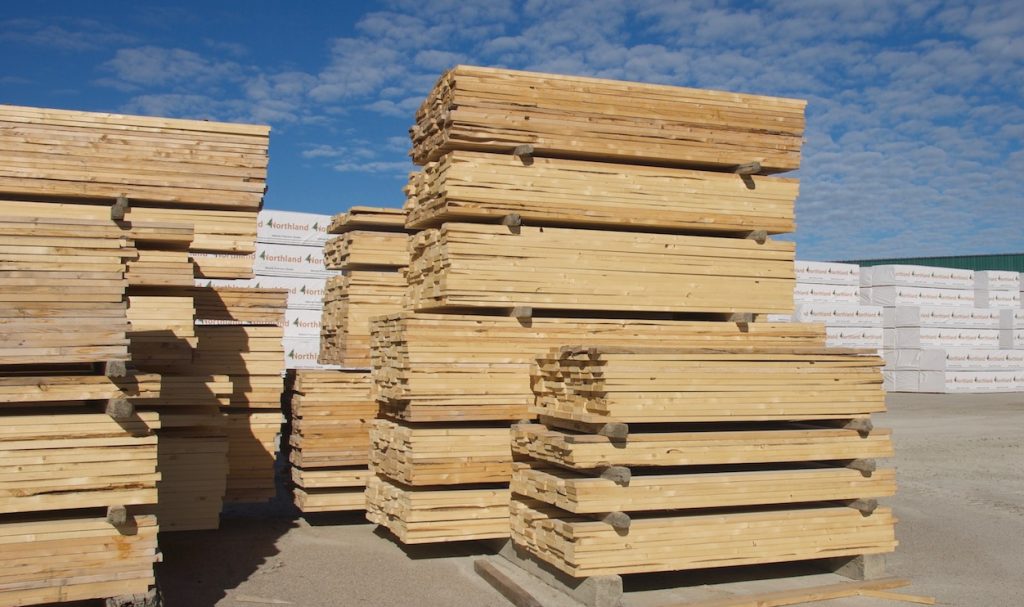
Features
Ways to disaster-proof your lumber business
How proper insurance coverage and planning can prevent lumber companies from financial ruin following a disaster.
March 15, 2022 By Steve Severaid
 Photo: Annex Business Media.
Photo: Annex Business Media. When a disaster like a hurricane or fire occurs, having the proper kind of insurance in place can mean the difference between financial ruin and survival. In fact, more than 50 per cent of businesses fail to reopen following a disaster, according to the U.S. Small Business Administration. The lumber industry is not immune.
Pre-disaster planning in combination with proper insurance coverage are the two of the most effective ways to successfully weather a storm, according to The Greenspan Co./Adjusters International vice-president Kenneth Crown. Greenspan’s expertise stems from handling dozens of insurance claims for the lumber industry.

Kenneth Crown is the vice-president of The Greenspan Co./Adjusters International.
According to Crown, comprehensive commercial policies should include these three types of coverage:
- Building coverage, which insures the building for the cost to replace and replicate the current building. Factors to consider are recent upgrades to the property and historic buildings.
- Business personal property, which protects equipment, stock and property including supplies, furnishings and more. The property should be valued at today’s cost, not the cost of the original purchase.
- Loss of income and profits, which covers loss of net income plus continuing expenses. Following a disaster, this coverage is vital to survival.
Nine additional types of coverage can also be crucial to pre-disaster planning, said Crown, a 40-year industry veteran.
- Business Income Insurance. Consider how long it would take to rebuild, then decide to insure for a specific dollar amount or an unlimited amount constrained to a specific time frame.
- Extended Period of Indemnification. After re-opening, it is common to experience lower sales as your business recovers. This endorsement provides additional coverage for loss of income beyond completion of repairs to the building after a loss.
- Extra Expense Coverage. This endorsement covers things like extra non-ordinary expenses that occur when trying to resume business or the cost of employing temporary workers or renting temporary facilities to continue full or partial operations.
- Blanket Coverage or Specific Location Coverage. Blanket coverage can be applied to any number of buildings under that “blanket.” It can also be applied to both buildings and equipment combined. Specific location coverage is limited to an individual property. The former provides more flexibility.
- Valuation. This insurance clause determines the amount a business receives for replacement costs. True Replacement Cost coverage means that your carrier will pay for the cost to replace whatever is lost exactly as it was. Functional Replacement Cost coverage eliminates the carrier’s obligation to replace with the same materials, and instead allows you to rebuild with a similar functional material.
- Newly Acquired Property. This would cover newly acquired property or major pieces of machinery acquired within a specified time frame prior to the event. After the time limitation, the business owner must notify the carrier of this acquisition to ensure future proper coverage.
- Seasonal Increase Endorsement. Businesses that experience an influx in inventory during a specific time of year will find this endorsement valuable. Coverage extends to the additional inventory over the limited liability coverage.
- Inflation Guard. This endorsement protects businesses against inflated construction costs, which are determined by a national database.
- Bylaw Coverage. Code and ordinance requirement upgrades are covered by this endorsement. This coverage is usually dependent on the municipality and can include foundation system, sprinklers, snow loads and energy efficiency requirements.
Business owners can take these six steps to mitigate exposure in the event of a disaster:
- Conduct an annual review with an agent to determine the replacement costs for buildings, stock, equipment and other necessary items.
- Provide your agent with yearly sales revenue and gross profit to accurately calculate loss of income
- Inform your agent if the business has acquired a large asset
- Save receipts for major purchases in an online server
- Conduct physical inventories on a regular basis
- Take photos of the property yearly
During a recent presentation to lumber industry business owners, Crown outlined the importance of insurance coverage using a case study involving a lumber mill, Trinity River Lumber Co.
According to Crown, the lumber mill opened in the 1800s and became the largest private employer in the community. But a devastating fire and a minimal settlement offer from an insurance company nearly put the company out of business.
Fortunately, the lumber mill hired The Greenspan Co./Adjusters International to negotiate all of its claims – buildings, equipment, loss of business income and extra expenses. With the help of Greenspan, the lumber company was able to collect millions more in settlements and reopen the mill.
The positive outcome underscores the value of experience, preparation and informed direction, which can make or break a business in a disaster.
Steve Severaid is a licensed public adjuster and president at The Greenspan Co./Adjusters International in San Francisco, where he handles disaster claims and advocates on behalf of the insured.
Print this page